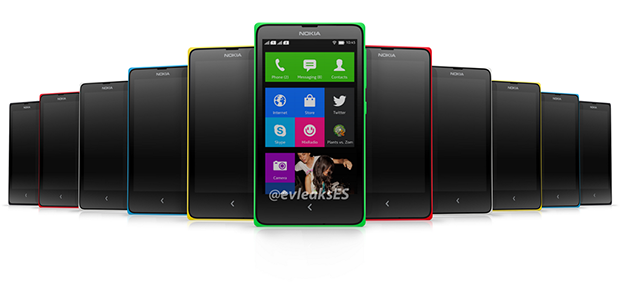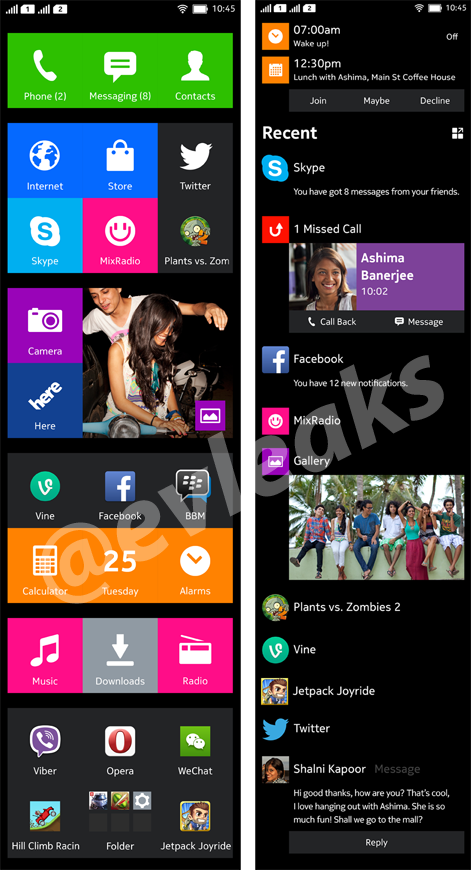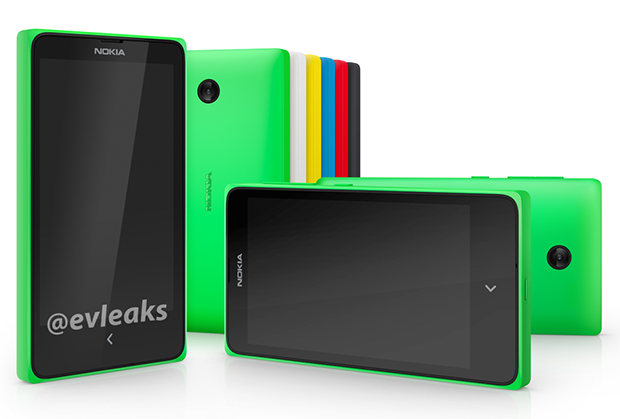 Thanks to a number of recent leaks, a fairly clear picture has emerged about the Nokia Normandy. Geared at emerging markets, it could well become Nokia’s first smartphone to use the Google Android operating system.
Thanks to a number of recent leaks, a fairly clear picture has emerged about the Nokia Normandy. Geared at emerging markets, it could well become Nokia’s first smartphone to use the Google Android operating system.
A number of reports have suggested that Nokia is using Android the same way that Amazon is for its Kindle Fire tablets. Using the open source components of Android, it is building its very own version and will likely add its own apps and services to the mix. Leaked images of the user interface show it to have been so heavily customized that it shares more in common with Windows Phone’s tiled interface than with stock Android.

With Microsoft set to complete its acquisition of Nokia’s devices business for US$7.2 billion, the fate of the Nokia Normandy has been less than certain. Assuming that Nokia does not release it before the acquisition goes through, why would Microsoft release a device powered by Android and offer yet another smartphone that would compete with entry-level Windows Phone devices?
At first glance, such a move does not make much sense. It could well end up on the thrash heap of history. But there is a scenario where this would not be so far-fetched.
With the Nokia acquisition, Microsoft will not only pick up Nokia’s Windows Phone Lumia smartphone line but also its entry-level Asha line of feature phones and ‘smartphones lite’ devices. Asha devices are powered by either the Series 40 operating system or the enhanced Nokia Asha platform.
We know that Microsoft is unlikely to want to support devices not running Windows Phone. Phasing out the Asha line may well be one of its first priorities. At the same time, it wants to push Windows Phone further into the entry-level smartphone market to capitalize on the growing shift from feature phones to smartphones in emerging markets. The entry-level Nokia Lumia 520 has done well for Nokia but it is still too expensive for many markets. This is where the Nokia Normandy comes in: As the device that Microsoft uses to get emerging markets to adopt Windows Phone.

Priced correctly, the Nokia Normandy could make its way into the hands of many. It would give those users their first exposure to the Windows Phone platform albeit indirectly. Users would get used to the tiled interface and preloaded and downloaded Microsoft apps and services. We’ve already seen Skype on one leaked image for example.
When the time comes for that user to trade in their Nokia Normandy for a new smartphone, they may well be inclined to choose a true Windows Phone smartphone given that they would already be familiar with the interface and Microsoft’s apps and services. In one fell swoop, Android has opened the door to Windows Phone.
Even if Android is heavily modified, would Google pass up an opportunity to tell the world that even Microsoft is using its operating system? Probably not. Microsoft may choose to avoid that potential public relation nightmare by further developing the Asha line instead. But that route will likely require a larger investment. Not only has Nokia already done a fair amount of the heavy lifting already with the Normandy but it also has Android’s large library of apps to entice users. Asha does not offer the same breadth of apps and Microsoft would likely have to again try to convince developers to build their app for another operating system. Fighting that battle for Windows Phone is likely enough for Microsoft. Tackling Google in the Android marketing battle head on might be an easier option in the end.
Will Microsoft use the Nokia Normandy to open the door to Windows Phone? Only time will tell. In the meantime, drop us a note below and let us know what you think of this little theory.
